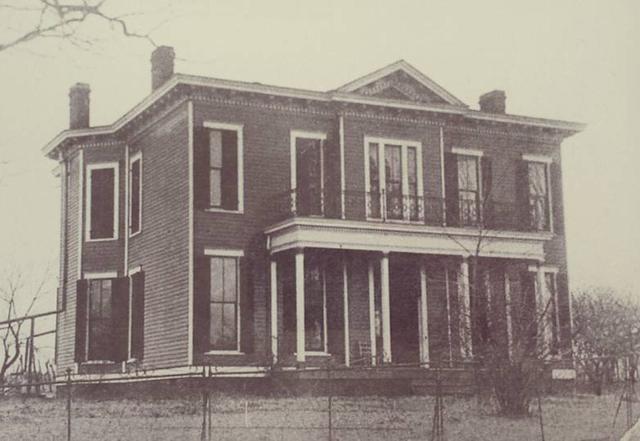The Olin Guest House was originally built in 1880 by James W. Lewis, a very prominent lawyer in Meade County and the founder of the Meade County Deposit Bank, of which he was president and principal stock holder. He and his wife, Martha E (Farleigh) Lewis, had eight children. The house was built to accommodate their large family and the still standing one room schoolhouse built on the grounds was used to educate the Lewis children.
History of the Olin House
The grand home was considered to be the stateliest house in the area. After Lewis' death in 1919, his daughter, Mary Lewis, and her husband William Dugan Ashcraft, also a local attorney, purchased the house from the Lewis heirs. They lived there with their nephew until 1950 when she sold it to The Olin Chemical Company.
Olin used the home as a residence for their plant managers. During that time the house was occupied by A. L. Willie, Resident Manager and later J. G. Woods, General Manager who did a major renovation to portions of the home and added the room we now use as the Cafe area.
After the Woods family moved, the Hillcrest Country Club was organized in 1957 and began to use the main dwelling of the home as a club house while it still accommodated overnight Olin guests. This continued until 1978 when Olin separated the residence from the country club and it became known as The Olin Guest House. In 1997, it was purchased by a private owner whose respected family has been prominent in Meade County since 1876. He was a faithful steward of this property until it was recently sold.
In April 2023, the Olin House was purchased by its current owner whose family also has long standing roots in Meade County. She plans on doing some renovation to the home and will continue to make it available to the public for special events and weddings. The schoolhouse which is currently is in disrepair will be renovated and will become a guesthouse in 2024.
The home still boasts the majority of its original building details and is affectionately loved by the community as a piece of local history.
